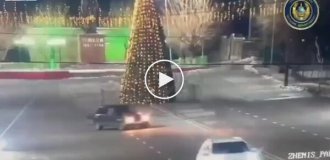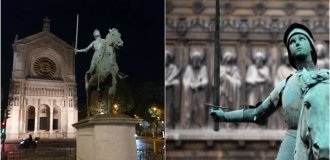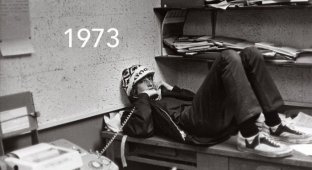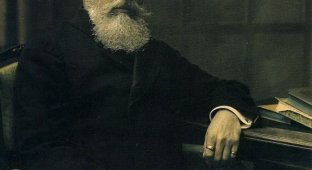Life in the Yenisei province at the end of the 19th – beginning of the 20th century (38 photographs)
Absolutely wonderful historical photographs of the life of the Russian population at the end of the 19th century. Compare clothes, houses, work, etc.

Cheldon peasants of Krasnoyarsk
The photo was taken in Krasnoyarsk at the end of the 19th century. The photograph and negative arrived at the museum in 1916.
A pair of photographic portraits of Krasnoyarsk peasants, taken against the backdrop of a log building.

HELL. Zyryanov - peasant from the village. Shushensky Minusinsk district of Yenisei province
The photo was taken in the village. Shushenskoye in the 1920s.
In 1897 A.D. Zyryanov settled in his house a man who had arrived in exile in the village. Shushenskoye V.I. Lenin.

Elderly peasants of the village of Yarkina, Yenisei district
The photo was taken in the village of Yarkino in 1911.
A pair of photographic portraits of peasants taken against the backdrop of an ancient chapel.
Collection of the Angarsk excursion 1911
The Angara region is the region of the lower reaches of the river. The Angara and its tributaries with a total length of more than 1000 km, located on the territory of the Yenisei province. This is one of the oldest settlement areas in Eastern Siberia, consisting mainly of old residents. In 1911, at the expense of the Resettlement Administration, the Angarsk excursion (expedition) was organized, led by museum worker Alexander Petrovich Ermolaev with the aim of examining the material culture of the Angarsk population.

Elderly women of the village of Yarkina, Yenisei district, in festive clothes
Photographer unknown. The photo was taken in the village of Yarkino in 1911.
A paired photo portrait of two elderly women in festive clothes.
Collection of the Angarsk excursion 1911

Peasant family from the village of Lovatskaya, Kansky district
The photograph was taken in the village of Lovatskaya, Kansky district, no later than 1905.
Peasants in festive clothes stand on the steps of the porch covered with homespun rugs.

A peasant family from the village of Yarki, Yenisei district, on a holiday on the porch of their house
August 1912. The photograph entered the museum in 1916.

A family of old-timers-Old Believers on the river. Manet
R. Mana, Krasnoyarsk district, Yenisei province. Before 1910

A rich peasant family from the village. Boguchansky Yenisei district
1911

Teenagers from. Boguchansky Yenisei district
1911
Collection of the Angarsk excursion 1911

Young peasants from Boguchansky Yenisei district
A pair of photographic portraits of young peasants standing near a barn with a low door and stairs.
Collection of the Angarsk excursion 1911

Peasant girls from the village of Yarki, Yenisei district, in festive clothes
August 1912. The photograph entered the museum in 1916.

A group of peasants from the village of Yarki, Yenisei district
1911. Peasants are photographed near a sleigh, against the backdrop of a mill with a low door supported by a pole. Dressed in work casual clothes.

Miner's Festive Costume
The photo was taken in the village. Boguchansky in 1911
Photo portrait of a young man in a festive costume of a gold miner.

A. Aksentiev - caretaker of the mine along the river. Taloy in the Yenisei district
The city of Yeniseisk. The photograph was taken on July 20, 1887.
The caretaker of the gold panning machine is an employee who supervises and monitors the order of work, and he also accepted gold from the panners.
The men's suit captured in the photograph is very unique: a mixture of urban and so-called mine fashion. A shirt of this type was worn by mine workers and peasants; this style was most often used for weekend wear. Boots with high heels and blunt toes were fashionable footwear in the 1880–1890s. Hat and watch on a neck cord or chain? urban luxury items added originality and mine charm to the costume.

Maria Petrovna Markovskaya - rural teacher with her family
Ilansk. July 1916
From right to left: M.P. sits in his arms with his son Seryozha (born in 1916). Markovskaya; standing next to him is his daughter Olga (1909-1992); daughter Nadya (1912?1993) sits on a stool at her feet; sitting next to her, with a purse in her hands? Simonova Matryona Alekseevna (nee Podgorbunskaya). The girl in the checkered dress is M.P.’s eldest daughter. Markovskaya - Vera (born 1907); daughter Katya (born 1910) sitting on the railing; O.P. is standing next to him. Gagromonyan, sister M.P. Markovskaya. Far left - head of the family Efim Polikarpovich Markovsky, railway foreman

Paramedic s. Bolshe-Uluisky Achinsk district Anastasia Porfiryevna Melnikova with a patient
On the back of the photo there is ink text: “An. Per. Melnikov as a paramedic at the B. Ului Hospital. The exiled settler, 34 years old, walked 40 versts to the hospital in the frosty weather of 30 degrees Reaumur.
The village of Bolshe-Uluyskoye, which is the center of the Bolshe-Uluyskaya volost, was located on the river. Chulym. It housed a medical mobile station and a peasant resettlement center.

Handicraft potter from the village. Atamanovskoye, Krasnoyarsk district
Beginning of the 20th century The village of Atamanovskoye was located on the river. Yenisei, in 1911 there were 210 households. Every Tuesday there was a market in the village.
The photograph entered the museum at the beginning of the twentieth century.

Fishing for tugun on the Verkhne-Inbatsky pen of the Turukhansk Territory
Verkhne-Inbatsky machine. Beginning of the 20th century
Tugun? freshwater fish of the whitefish genus.
The photograph entered the museum in 1916.

An Angarsk peasant woman goes to check the ouds. Angara region
Collection of the Angarsk excursion 1911

Ice fishing with uds on the river. Hangar. Yenisei district
Collection of the Angarsk excursion 1911

Rafting of a dead elk along the river. Mane, Yenisei province
R. Mana (in the area of Krasnoyarsk or Kansk districts). Beginning of the 20th century

Peasant going hunting
Near the village of Yarki. 1911
The hunter stands on wide, short skis attached to his feet with straps. We used these skis without poles.
Collection of the Angarsk excursion 1911

Angarsk hunter with a dog
D. Yarkina, Yenisei district. 1911
The hunter is photographed against the backdrop of a barn with a low plank door and a hay rack at the top.
Collection of the Angarsk excursion 1911

In a peasant yard in the village. Kezhemsky Yenisei district
Collection of the Angarsk excursion 1911

Crushing flax in Yenisei district
Yenisei district. 1910s From receipts of the 1920s.

Portomoynya on the Yenisei
Krasnoyarsk Early 1900s The photograph entered the museum in 1978.

Laundresses on the Yenisei
Krasnoyarsk Early 1900s Reproduction from negative 1969

Twisting ropes in the village of Yarki, Yenisei district
1914. On the back of the photograph there is an inscription in pencil: “Matchmaker Kapiton twisting the rope.”
The photograph entered the museum in 1916.

Tobacco harvesting in Minusinsk district
1916. At the back of the peasant estate, in the vegetable garden, tobacco is being harvested, some of which has been torn out and laid out in rows.
The photograph entered the museum in 1916.

Weaving mill-krosna in the village. Verkhne-Usinsk Usinsk border district
The photograph was taken in 1916 and entered the museum in 1916.

Preparation of "Borisov" brooms in the village. Uzhur of Achinsk district
A snapshot of the late 19th - early 20th centuries. On Boris's day, July 24, fresh brooms were prepared for the baths, hence the name? "Borisov" brooms

Mummers on the streets of the Znamensky Glass Factory on Christmastide
Krasnoyarsk district, Znamensky glass factory, 1913–1914.
A group of men and women dance to an accordion in the street. The photo was previously published as a postcard.

Game of "small towns" in the village of Kamenka, Yenisei district
Beginning of the 20th century Reproduced from the book “The Siberian Folk Calendar in Ethnographic Relation” by Alexei Makarenko (St. Petersburg, 1913, p. 163). Photo by the author.

"Running" - a competition between horse and foot in the village of Palace of the Yenisei district
1904. Reproduced from the book “The Siberian Folk Calendar in Ethnographic Relation” by A. Makarenko (St. Petersburg, 1913, p. 143). Photo by the author.
In the foreground are two competitors: on the left is a young guy with his shirt pulled out over the ports and with bare feet, on the right is a peasant sitting astride a horse. Next to the pedestrian there is a stick - a meta, which is the beginning of the distance, the second pole is not visible. Behind is a crowd of men - peasants of different ages in festive clothes, watching what is happening. The competition takes place on the street of the village; part of its right side with several residential and outbuildings is visible. This kind of “race” between horse and foot was organized by Siberians in the summer on holidays and fairs.
The distance is small and necessarily includes a 180-degree turn. That is why the pedestrian often won: the horse skidded :)
IDP peasants near temporary housing
Minusinsk district. Beginning of the 20th century
At the beginning of the 20th century, with the beginning of the Stolypin agrarian reform, a stream of immigrants from the southern and western regions of Russia, Belarus, and Ukraine poured into Siberia. They were called new settlers, and those who lived in Siberia for more than one generation were old-timers.

Khokhlusha, a migrant from the village of Novo-Poltavka, Minusinsk district
A snapshot of the late 19th - early 20th centuries. In the photo: a young woman in a traditional Ukrainian costume, sitting on the porch step. Admission 1916

Khokhlusha
On the question of the “regionality” of the costume. This photo is from the album of V.G. Kataeva 1911 The photograph was taken in a resettlement village founded on the lands of the Siberian Cossacks.

Wedding
Kansky district, Karymova village, October 1, 1913. The Sokolov family, new settlers from the Tambov province
























